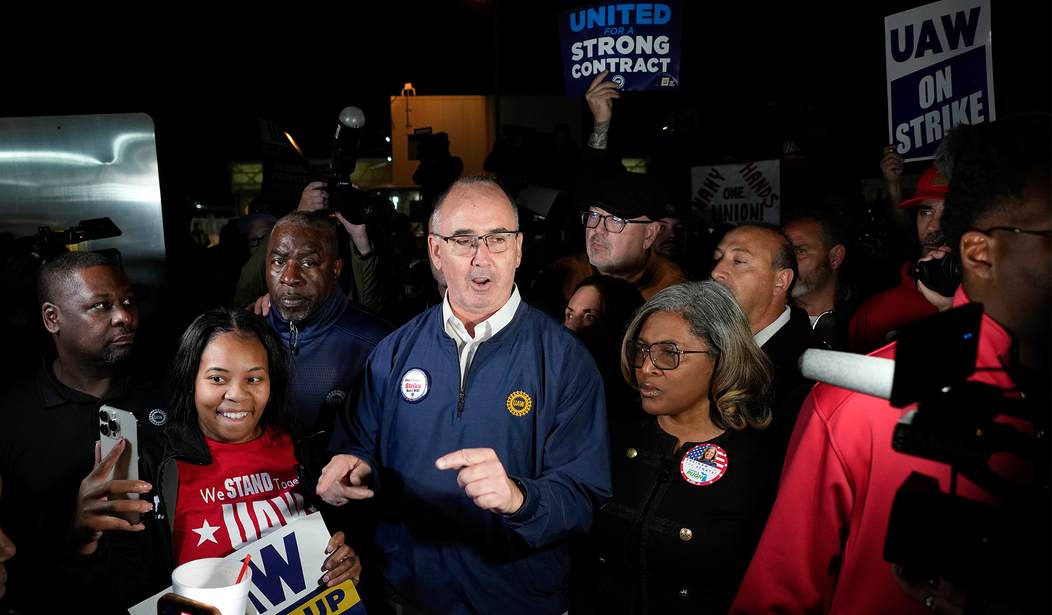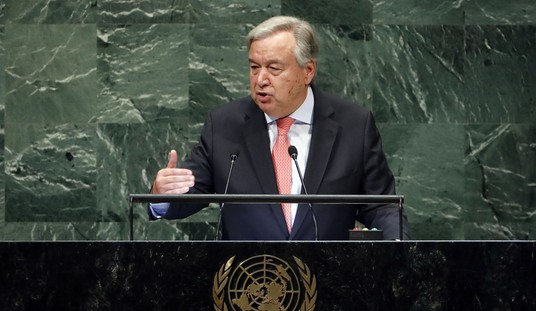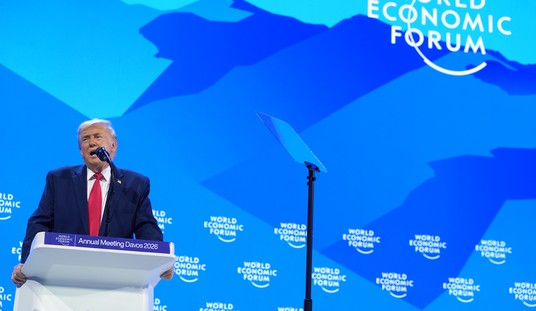As you’ve probably heard, the UAW has vowed to expand its strike against the Big 3 automakers tomorrow unless there are signs of significant progress toward an agreement. So are there any signs of progress? The Washington Post reported earlier today there’s still no sign of a deal.
The United Auto Workers and the Detroit’s Big Three automakers spent Thursday in negotiations as union leaders warned that an ongoing labor strike could spread to new facilities as soon as midday Friday…
Stellantis, which owns Jeep and Chrysler, made a counteroffer to the UAW on Wednesday, the details of which have not been released and which the union said it is reviewing. It marks the first offer from any of the companies since the strike began Friday…
As the strike moved into a seventh day, the companies appeared to be issuing more temporary layoffs, following announcements of layoffs of some workers at Ford and GM facilities last week at plants not on strike.
The UAW is paying striking workers $500 a week out of a strike fund. That will begin to add up as more workers go on strike and the whole thing drags on. Meanwhile, as I suggested last week, there’s a general consensus that the winner of this whole fiasco is Tesla. If your competitors prices go up while yours remain flat, that’s a big advantage. Yesterday the Atlantic published a story titled “America Is Just Now Entering the Age of Tesla.”
In spite of its real struggles, Tesla remains surprisingly dominant. Earlier this year, its Model Y became the world’s best-selling car, only months after breaking into the top 10 in U.S. sales—both firsts for an EV. Even as everything turns electric, Tesla’s four core vehicles account for 60 percent of the EVs sold in America; Tesla sold 336,000 EVs in the first half of the year—nearly 10 times the sales of its nearest competitors, Hyundai-Kia and GM…
Tesla is winning the charging war too. Until very recently, its sprawling Supercharger network served Teslas only, and its proprietary plug was locked in a VHS-versus-Betamax standoff against the standard used by everyone else. Last November, Musk rebranded his tech as the open North American Charging Standard, inviting his rivals to use his system. One by one, they did. The drivers of future Ford, Honda, Mercedes-Benz, GM, Rivian, Polestar, Nissan, and Volvo EVs that use Tesla’s plug will be able to charge at some Tesla-owned Superchargers—and send Musk their money.
No matter how the UAW strike ends, for now and probably for years to come, all electrified roads lead to Tesla. It faces unprecedented competition, but the legacy carmakers are stuck in neutral.
Speaking of the charging network, they picked up another manufacturer today. Jaguar says it will also be adopting the NACS standard.
But the NY Times published a story today suggesting that while Tesla may benefit from the strike there may be a hidden downside as well. And that downside is that Tesla becomes an even more important target for unionists.
The U.A.W., which has failed to organize Tesla’s factory workers in the past, is gearing up for another attempt, a top union official said.
“There is a group of Tesla workers who are actively talking about forming a union and creating the best representation they can for themselves and their co-workers through collective bargaining,” said Mike Miller, the director of the U.A.W.’s Region 6, which includes California and Nevada, where Tesla makes cars and batteries. Tesla also has a large factory in Austin, Texas, not too far from a unionized G.M. factory in the Dallas-Fort Worth area…
Tesla did not respond to a request for comment, but Mr. Musk seemed to acknowledge the union threat last week, saying on X that his workers were better off than employees of G.M., Ford and Stellantis. “We pay more than the U.A.W.,” he said, although he added that “performance expectations are also higher.”
The traditional automakers quarreled with Mr. Musk’s math, saying that they pay their workers substantially more and that a big raise would only widen the gap and undermine their ability to invest in electric vehicle and battery factories. Ford says its hourly employees make an average of $112,000 per year including benefits, compared with about $90,000 at Tesla.
The Ford figures do not include stock options that Tesla grants employees, and that can be worth a lot.
So the underlying idea here is that by jacking up hourly wages as high as possible in the current negotiations, the UAW makes unionization more attractive to workers at Tesla. That may be true but it won’t help much if the Big 3 can’t make a profit because of the added labor costs. And of course, part of this plan is dependent on the UAW getting what it is asking for. If the Big 3 hold the line the UAW may not look so great in the end. We’ll have to wait and see. But there’s no doubt they would love to get their claws into Tesla.
Finally, this isn’t directly related to the strike but it’s too funny not to include it. A group of lawyers sued Tesla claiming that board members were being overpaid. They won the lawsuit to the tune of $700 million which will now go back to the company. And now they are asking a judge in Delaware to grant them $229 million in fees. That works out to more than $10,000 an hour.
A legal team that forced Tesla’s directors to agree in July to return more than $700 million in compensation to the automaker for allegedly overpaying themselves are now seeking a huge payday of their own.
The lawyers want a judge to approve $229 million in fees, or $10,690 an hour, according to a Sept. 8 filing in Delaware’s Court of Chancery.
The proposed fee award, if approved, would be among the largest ever to result from a shareholder lawsuit filed against a board.
I guess overpayment is in the eye of the beholder or something.








Join the conversation as a VIP Member